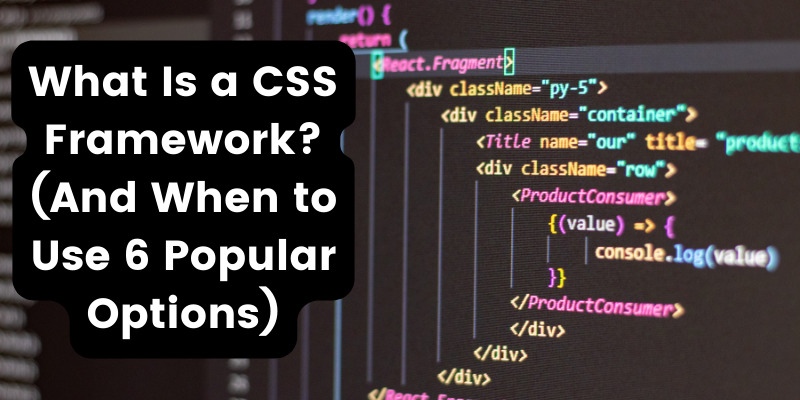Blitz News Digest
Stay updated with the latest trends and insights.
CSS Frameworks: The Fashion Statement for Your Code
Discover how CSS frameworks can elevate your coding style and transform your web projects into stunning works of art. Get inspired today!
What Are CSS Frameworks and Why Are They Essential for Modern Web Development?
CSS frameworks are pre-prepared libraries that help in designing and structuring websites more efficiently. They provide a consistent set of design guidelines and reusable components, allowing developers to create visually appealing and responsive web pages without starting from scratch. By using these frameworks, developers can save time and reduce the amount of custom CSS code needed, leading to faster development cycles and enhanced productivity.
In the rapidly evolving landscape of modern web development, CSS frameworks have become essential tools. They offer features such as grid systems, pre-designed UI elements, and responsive design capabilities, which are crucial for creating user-friendly and accessible websites. Additionally, frameworks like Bootstrap and Foundation are supported by vibrant communities, ensuring regular updates and improvements, making them reliable choices for web developers aiming to stay ahead in the competitive digital environment.

Top 5 CSS Frameworks to Elevate Your Website's Style
When it comes to enhancing the visual appeal of your website, utilizing a robust CSS framework is essential. Among the most popular choices, Bootstrap stands out with its responsive design capabilities and extensive pre-built components. This framework enables developers to create mobile-friendly sites quickly and efficiently. Another notable option is Tailwind CSS. Its utility-first approach allows for unparalleled customization, giving you complete control over styling elements without forcing you into a specific design mold.
In addition to these, Foundation by ZURB offers a powerful, flexible framework that caters to both beginners and experienced developers. It's packed with features like grid systems and responsive navigation, making it easier than ever to build a modern website. Furthermore, Bulma provides a clean and minimalistic design, perfect for those who prefer simplicity without sacrificing aesthetics. Lastly, Materialize CSS implements Google’s Material Design principles, ensuring your site not only looks good but also offers an intuitive user experience. Exploring these CSS frameworks can significantly elevate your website's style.
How to Choose the Right CSS Framework for Your Project?
Choosing the right CSS framework for your project is a crucial step that can significantly impact your development workflow and the final outcome of your website. Consider the scope of your project: if you're building a quick prototype or a small landing page, a lightweight framework like Bulma or Skeleton might suffice. For larger, more complex applications, you may want to explore more robust options like Bootstrap or Tailwind CSS. Be sure to evaluate the framework's documentation, community support, and customization options to ensure it aligns with your needs.
Another vital aspect to consider is browser compatibility. Ensure that the CSS framework you choose is compatible with the browsers your target audience is likely to use. Additionally, look into the performance of the framework; frameworks with larger file sizes can slow down your website's load time, which can negatively affect your SEO. To help you make an informed decision, create a checklist that includes the following criteria:
- Project requirements
- Community and documentation
- Customization options
- Performance and load times
- Browser compatibility